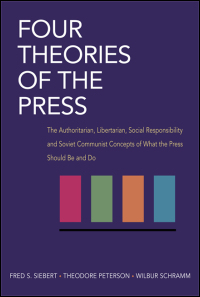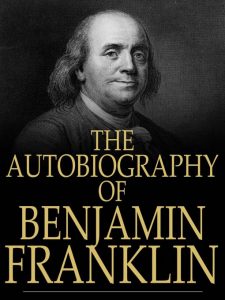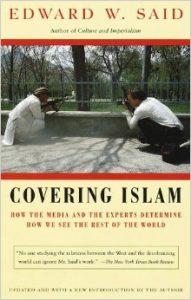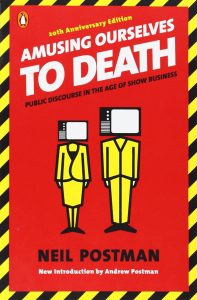In the book Four Theories of the Press, Fred S. Siebert, Theodore Peterson and Wilbur Schramm explained that social and political structures affect how the press operates in a society. The three authors wrote essays that outlined the principles of the Authoritarian Theory, the Libertarian Theory, the Social Responsibility Theory and the Soviet Communist Theory. Their essays showed how society played a role in controlling these principles. Their essays also highlighted differences among the theories and provided reasons why the press operates differently based on the social and political structures.
The Authoritarian Theory began in the latter portion of the Renaissance in England. At the time, the monarch and the elite individuals of the “state” controlled all the information received by the people in society. Siebert summarized this theory as “the nature of man, the nature of society and the state, the relation of man to the state and the nature of knowledge and of truth” (Siebert, 10). The press worked in favor of the state and not the individual. The state held the power to control whether or not a man could engage in private or public ownership to share information. The state granted special permission to a select few to engage in sharing information. Siebert summarized this theory referencing German philosopher Georg Hegel saying, “freedom meant he was not free but that his actions are determined by history and above all the Absolute Idea of the state” (Siebert, 14). As the Renaissance continued, the demand for printed materials increased and political power shifted in favor of a democratic government, leading to the rise of the Libertarian Theory.
The Libertarian Theory allowed man to seek the truth and allowed the press to serve as a partner to do so. The “Enlightenment” of the 17th and 18th centuries gave greater access to numerous forms of information such as physics, religion, history, law and politics. The government became a “trustee to which the people had delegated the authority and from which they could withdraw it” (Siebert, 43). Now, the government allowed a free market system to share information, to inform, to entertain, to sell and to serve as the “Fourth Estate to make sure the government did not overstep its boundaries or limit the unalienable rights of the people” (Siebert, 50-51).
The Social Responsibility Theory developed in the United States in the 20th century. Like the Libertarian Theory, technology and more access to information created a wave for new forms of media such as movies, radio, and television. “Industrialization accompanied a growing volume of advertising, a major support of newspapers, magazines and broadcasting” (Peterson, 77). Nevertheless, a small portion of owners and managers of media companies began to control the press, regulating what people watched, heard or read, eliminating the free enterprise concept. Siebert stated that “three television, four radio networks, three wire services shape a large part of the information in American homes” (Siebert, 4). With more media to gain information but fewer hands that regulated that information, the press now held the responsibility to inform people so they could make informed decisions about critical issues in society.
Rooted in the Marxist philosophy, the Soviet Communist Theory emerged from the principles of the Authoritarian Theory. Schramm explained how the Soviet press existed to advocate for the Communist Party. Schramm detailed the differences in the American press and the Soviet press, providing direct contrasts of two. “Democracy from the beginning defended the rights of men to disagree with their government,” (Schramm, 107). According to Schramm, the Soviet press served as instruments “for state power and Party influence” (Schramm, 121). While the American press informs, entertains, sells and checks the government; Schramm discussed the role of the media in the Soviet press. “ To the Soviet mind, the editor can pick and choose his reports and need not present an event soon after it occurs,” (Schramm, 134). While television and radio entertain audiences, “Soviet broadcasting will talk to its audiences. It will be the voice of the Party and of the government in the home” ( Schramm, 136).
The term “press” consists of different forms of media. With each theory, the press grew in size, volume and structure over centuries. However, the social and political structures of the society determined the growth and effectiveness of the press.



